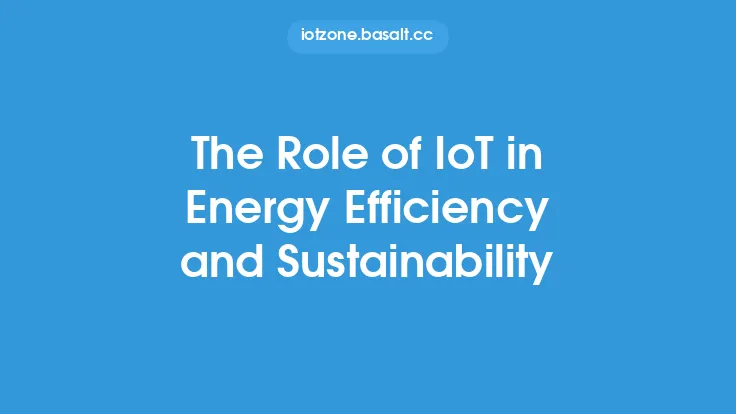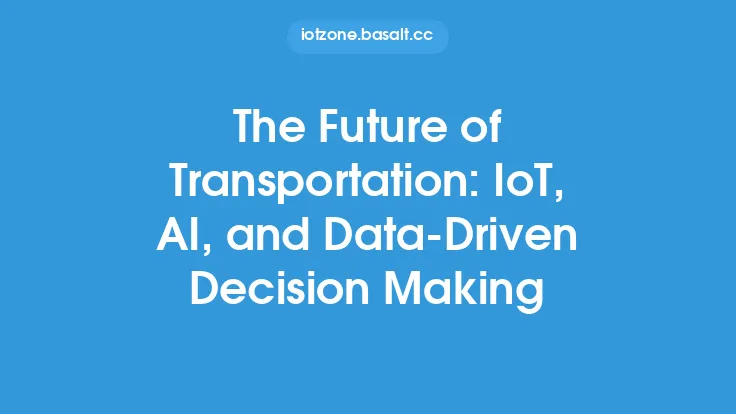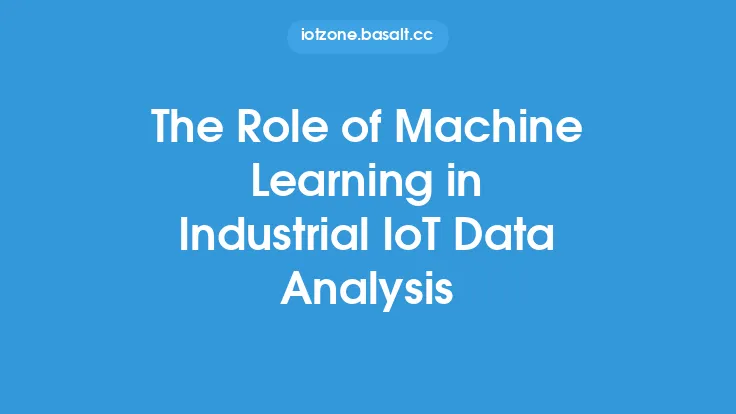The Internet of Things (IoT) has revolutionized the way we live and work, with an estimated 41.4 billion connected devices expected to be in use by 2025. As the number of IoT devices continues to grow, the amount of data generated by these devices is increasing exponentially. This is where machine learning (ML) comes into play, enabling organizations to extract insights from IoT data and make informed decisions. In this article, we will explore the role of machine learning in IoT, its applications, and the benefits it provides.
Introduction to Machine Learning in IoT
Machine learning is a subset of artificial intelligence (AI) that involves training algorithms to learn from data and make predictions or decisions without being explicitly programmed. In the context of IoT, machine learning can be used to analyze the vast amounts of data generated by connected devices, identify patterns, and detect anomalies. This enables organizations to optimize their operations, improve efficiency, and reduce costs. Machine learning algorithms can be applied to various IoT applications, including predictive maintenance, quality control, and energy management.
Applications of Machine Learning in IoT
Machine learning has a wide range of applications in IoT, including:
- Predictive Maintenance: Machine learning algorithms can be used to analyze sensor data from industrial equipment and predict when maintenance is required, reducing downtime and increasing overall efficiency.
- Quality Control: Machine learning can be used to analyze data from sensors and cameras to detect defects in products and improve quality control.
- Energy Management: Machine learning algorithms can be used to analyze energy usage patterns and optimize energy consumption in buildings and industries.
- Anomaly Detection: Machine learning can be used to detect anomalies in IoT data, such as unusual patterns of behavior or unexpected changes in sensor readings.
- Device Management: Machine learning can be used to manage IoT devices, including monitoring device performance, detecting faults, and optimizing device configuration.
Machine Learning Techniques Used in IoT
Several machine learning techniques are used in IoT, including:
- Supervised Learning: This involves training machine learning algorithms on labeled data to make predictions or classify new data.
- Unsupervised Learning: This involves training machine learning algorithms on unlabeled data to identify patterns or anomalies.
- Reinforcement Learning: This involves training machine learning algorithms to make decisions based on rewards or penalties.
- Deep Learning: This involves using neural networks to analyze complex data, such as images and speech.
Benefits of Machine Learning in IoT
The use of machine learning in IoT provides several benefits, including:
- Improved Efficiency: Machine learning can be used to optimize operations, reduce waste, and improve productivity.
- Enhanced Decision-Making: Machine learning can be used to analyze data and provide insights that inform decision-making.
- Increased Accuracy: Machine learning algorithms can be used to detect anomalies and improve the accuracy of predictions.
- Reduced Costs: Machine learning can be used to reduce energy consumption, predict maintenance, and optimize device configuration.
- Improved Customer Experience: Machine learning can be used to analyze customer data and provide personalized experiences.
Challenges and Limitations of Machine Learning in IoT
While machine learning has the potential to revolutionize IoT, there are several challenges and limitations that need to be addressed, including:
- Data Quality: Machine learning algorithms require high-quality data to make accurate predictions. However, IoT data is often noisy, incomplete, or inconsistent.
- Scalability: Machine learning algorithms need to be able to handle large amounts of data and scale to meet the needs of IoT applications.
- Security: Machine learning algorithms need to be secure to prevent attacks and protect sensitive data.
- Interoperability: Machine learning algorithms need to be able to integrate with different IoT devices and systems.
- Explainability: Machine learning algorithms need to be explainable to provide insights into their decision-making processes.
Real-World Examples of Machine Learning in IoT
There are several real-world examples of machine learning in IoT, including:
- Industrial Automation: Companies like Siemens and GE are using machine learning to optimize industrial automation, predict maintenance, and improve quality control.
- Smart Homes: Companies like Nest and Ecobee are using machine learning to optimize energy consumption, detect anomalies, and provide personalized experiences.
- Transportation: Companies like Uber and Lyft are using machine learning to optimize routes, predict demand, and improve safety.
- Healthcare: Companies like Medtronic and Philips are using machine learning to analyze medical data, detect anomalies, and provide personalized care.
Future of Machine Learning in IoT
The future of machine learning in IoT is exciting and rapidly evolving. As the number of connected devices continues to grow, the amount of data generated by these devices will increase exponentially. This will create new opportunities for machine learning to extract insights, optimize operations, and improve decision-making. Some of the future trends in machine learning for IoT include:
- Edge Computing: The use of edge computing to analyze data closer to the source, reducing latency and improving real-time decision-making.
- 5G Networks: The use of 5G networks to enable faster data transfer, lower latency, and greater connectivity.
- Artificial Intelligence: The use of artificial intelligence to integrate machine learning with other AI techniques, such as natural language processing and computer vision.
- Autonomous Systems: The use of machine learning to enable autonomous systems, such as self-driving cars and drones.





